Growing Eremophila standards is all quite new to me but I’m having a ball experimenting with how different plants can look when grown on a stick.
Grafting them has been relatively easy, as has been keeping an attractive habit while the plants are still young. However, pruning as the plants age, will I’m sure, be more of a challenge. Ray Brown at the Illawarra Grevillea Park has also done quite a few which are now being trialled in the Park.
Initially I didn’t give a great deal of thought to what I grafted, I just wanted to see what could be done and how they grew. Often it was whatever good grafting material was in the garden – this explains why I grafted half a dozen ‘Pink Panthas’, not the most obvious plant to start with.
Why standards?
I like the idea of being able to display plants in unique ways. Often this will bring flowers and foliage closer to eye level. Instead of looking at E. subteritifolia running along the ground, a totally different perspective is gained as in cascades horizontally. Biserata layers as it grows toward the ground.
For bushes standards have the additional benefit of being able to put something underneath so you can plant more which is always a bonus. I have begun to use my Pink Pantha grafts as second tier plantings. The results are not yet in but imagine the effect of the grey and bright pink of Pink Pantha sitting above and behind a Westringa.
I also feel there is great potential for many of these plants to be impressive pot plants. Slower growth in pots may allow some larger plants to be grown as standards.
The bane of many grafted Eremophilas is continual growth from the understock – not so with standards.
And of course it you have rabbits – problem solved!
Understock
Myoporum bateae is my preferred understock since it grows straight, and in pot only takes a season or so to reach the desired height. I’ve tried insulare and monantum but they require much more effort to grow upright, constantly needing to be staked, with mixed results at best. The stem of these plants is also lumpy and often twisted. I now only use them for small standards ( about 30/40cm).
As the plant grows I remove most of the side branches which can be easily struck for the next round of standards. It the graft fails it only takes a couple of months for the new growth to develop.
I use 6 to 1 perlite and peat mix with purple clonex. These are easily struck at any time except winter.
I only fertilise the understock in the pots. I use slow release Osmocote which I find is the safest and most effective fertiliser for all my native plants. Once in the ground I see no need to fertilise.
Grafting
I usually graft as close to the top as possible, although grafting at any point along the stem seems to work okay. The growth needs to be active – fresh but firm.
I use a wedge graft.
Progress/ maintenance
To date I have grafted the following
Eremophila ‘Kalbarri Carpet’ – This is the oldest graft and is grown as a ball on a 1.6 metre standard. It is tip pruned regularly to keep it compact and any wayward branches are pruned. It does not hang down. This requires very little maintenance. The plant pictured has now ben in the ground a couple of years.
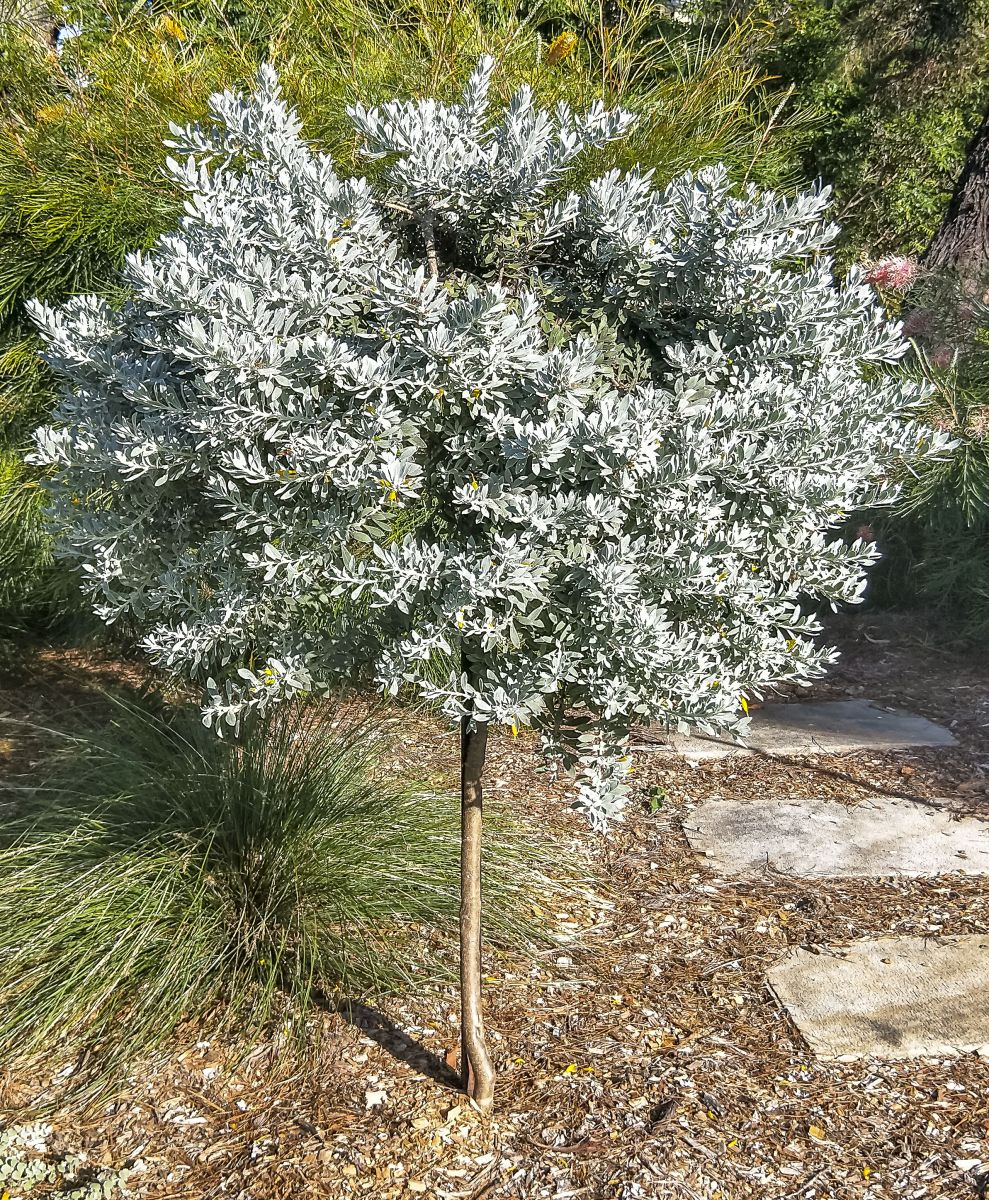
Eremophila ‘Fruit Salad’ – Grown as a 1.2 metre standard. I thought this would grow with a habit similar to Kalbarri Carpet, but it is has proved to be far less dense. I’ve tried pruning a little harder but I still feel it too open to be worthwhile as a standard. The plant pictured has been in the ground 18 months.
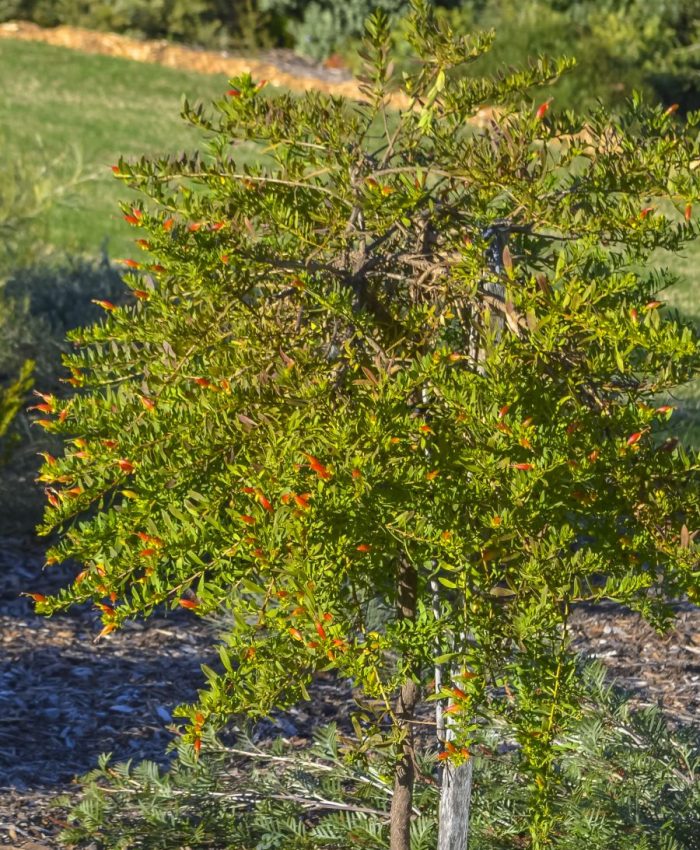
Eremophila ‘Pink Pantha’
Grown as .6 to 1 metre standards.
These are coming along nicely and are constantly tip pruned to keep them compact. My aim is to use a hedger 3 or 4 times a year to keep them smaller and tighter.
Time will tell is this works.
These are mainly being grown as second tier plantings and so they won’t really appear like standards.
They are really just plants lifted off the ground so that they are high enough to sit above as a contrast to the plants in front.
The plant has been in the ground 9 months
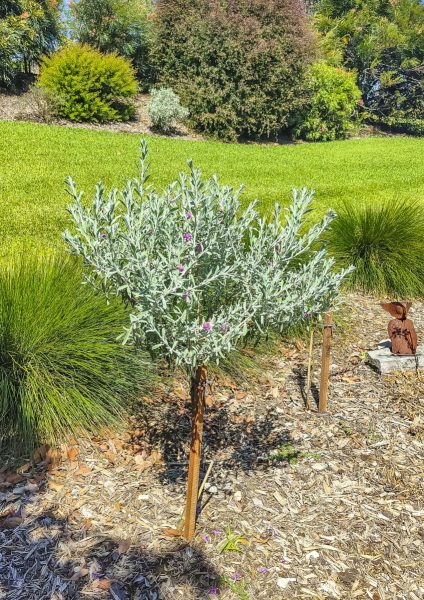
Eremphila subteretifolia and biserrata –Best grown as standards up 1.8 metres high. Just as they do on the ground these groundcovers grow very quickly and will take only 12 – 18 months to reach the ground.
They can then be left to continue to grow as a ground cover or pruned so that the stem of the standard is exposed. This is best grown as a specimen plant. Plant it where it can make a statement. The biserrata on the right has been in the ground for 18 months. It was badly damaged by a storm when it had only been in the ground a couple of months. There was only a small shoot left jutting out of the graft. But as you can see it has come back really well. Below is subteretifolia 4 months in the ground. By the end of autumn I expect this to have totally covered the bateae understock.
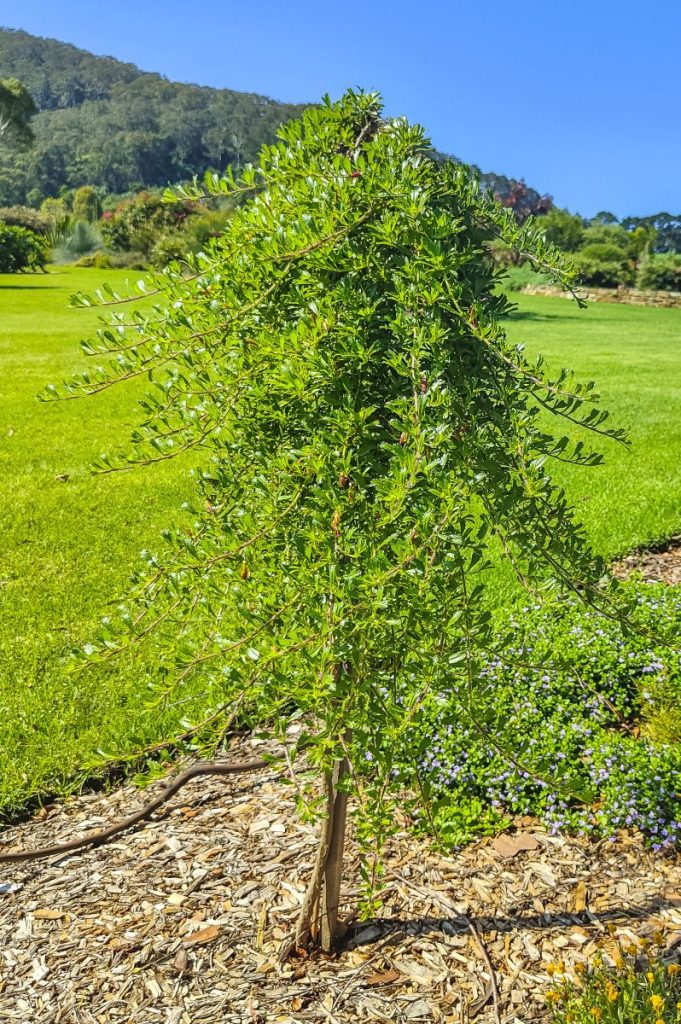
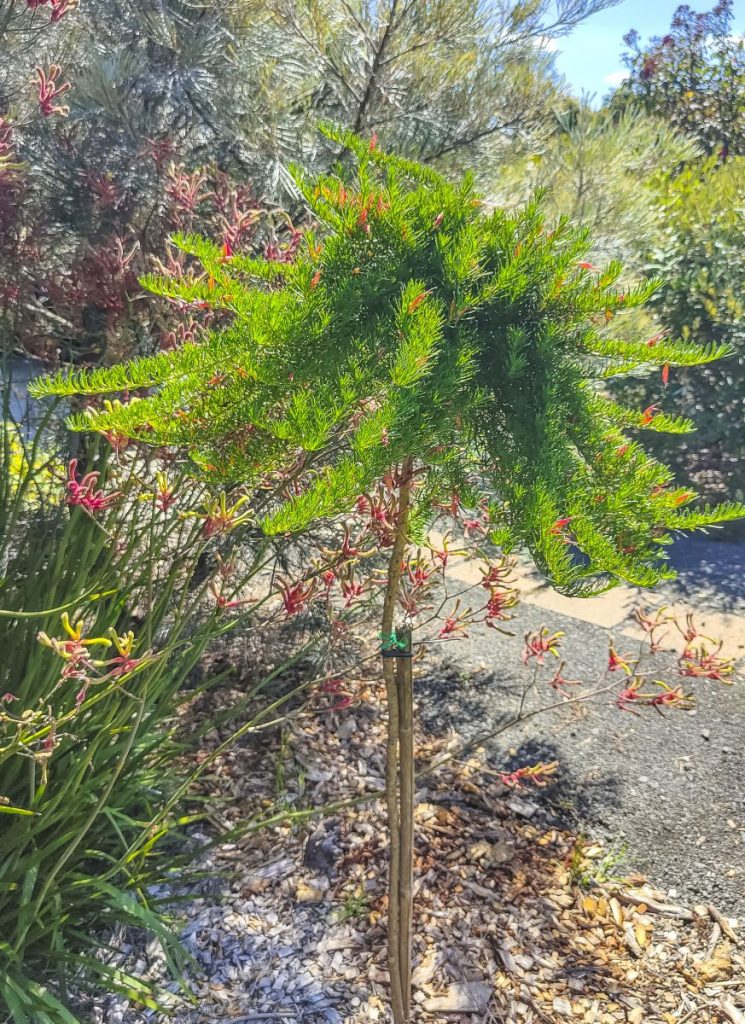
Eremophila nivea – Grown as a short standard.
Already a wonderful specimen plant that displays its foliage and flowers perfectly, the idea of trying it as a standard came from left field.
So far it looks somewhat different on a stick as it branches out from a single stem instead of several stems at ground level.
It grows so quickly that it is easy to shape and keep compact. Initially it has been tip pruned every couple of weeks. It will probably need more regular pruning than one planted conventionally.
The second plant could be used as a second tier planting, although I like it as a stand alone.
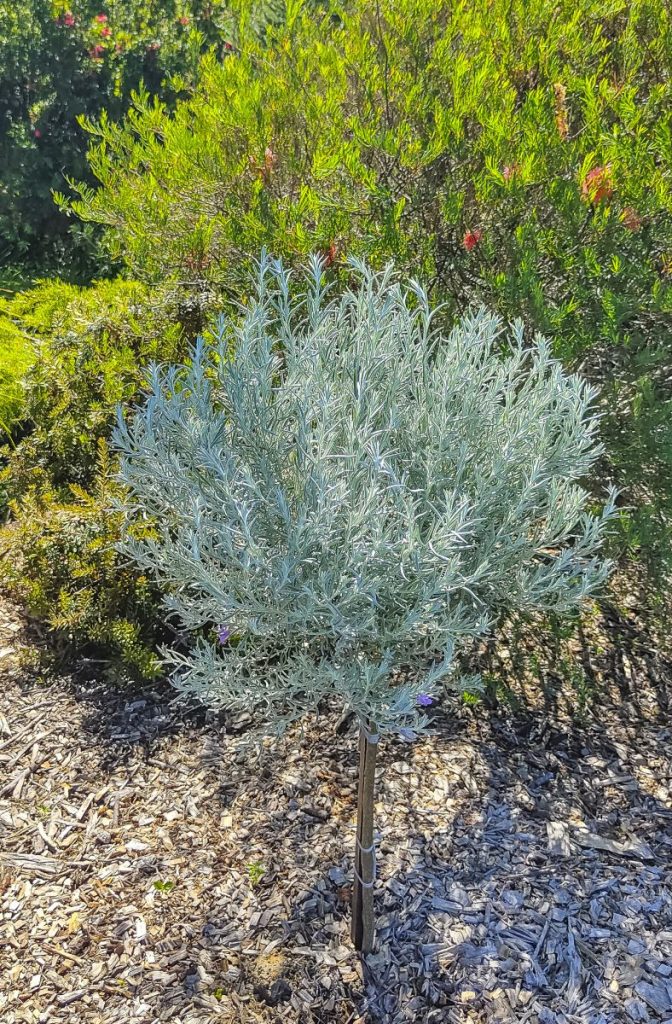

Eremophila waitii – short standard. I have one of these ready to go. This looks as if its going to look fantastic as a standard. Its natural habit will probably mean it needs nothing less than a yearly prune. Of all the upright plants I’ve grafted as a standard this is the one that I think has the greatest potential. Fingers crossed!
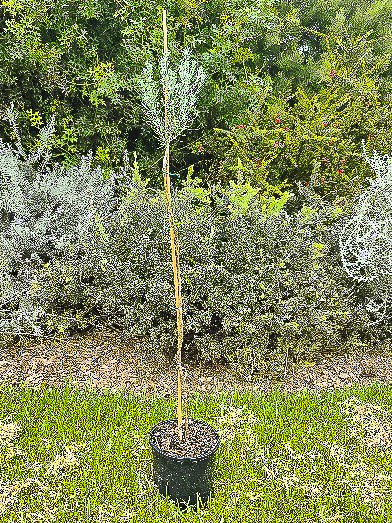
Eremophila muelleriana – short standard. This is one I’m looking forward to seeing develop.I have been frustrated by the unseemly understock which never stops growing and which detracts from the plant.I am hoping that lifting it 40 cm off the ground will give me everything this great plant has to offer without the problems. This plant was only put into the ground in October.
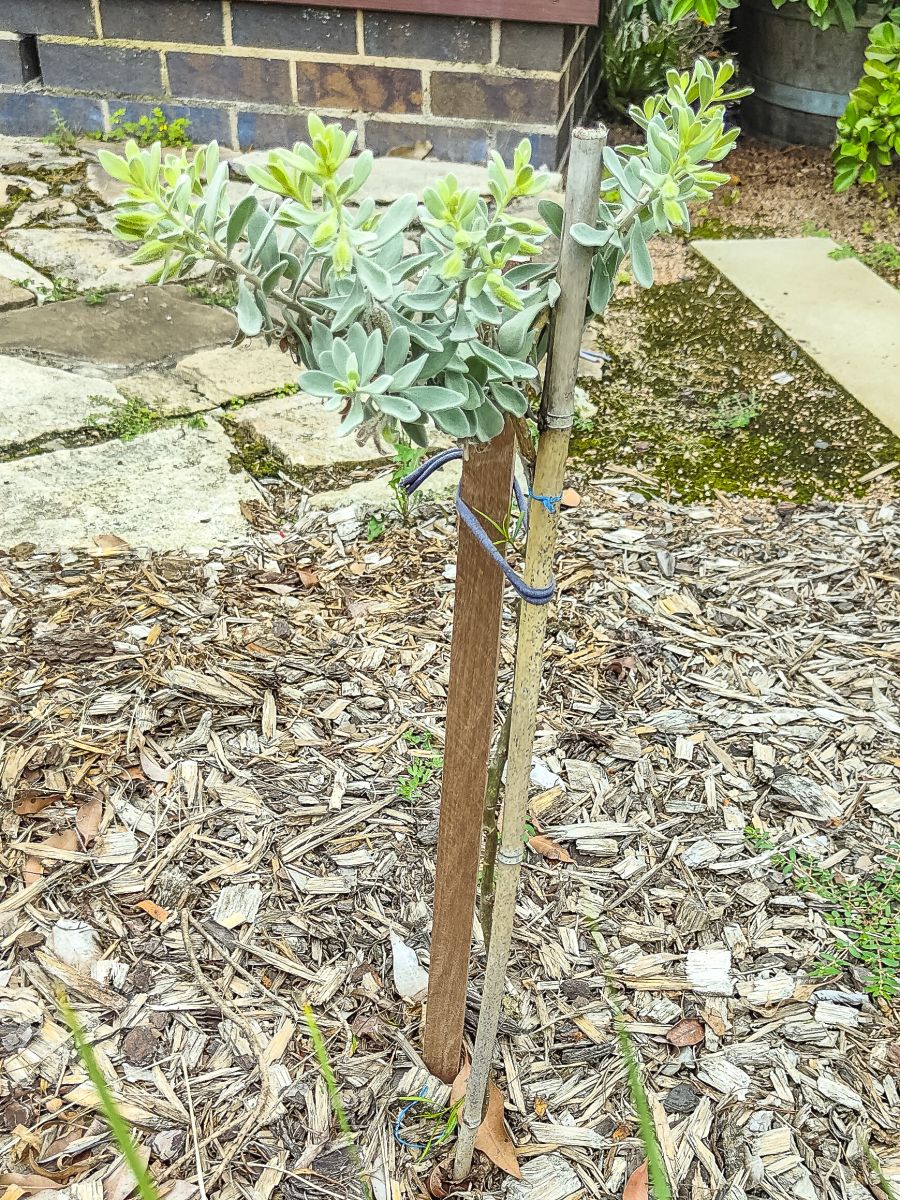
Eremophila delisseri– Trialled as a short standard. Only recently grafted and slower growing so I’m reserving my judgement. Having said this I think it will be pretty good. I like the way it can sprawl and look a little crazy and I intend to let it find its own path. The only thing I’m doing is the occasional tip pruning. Also planted in October.
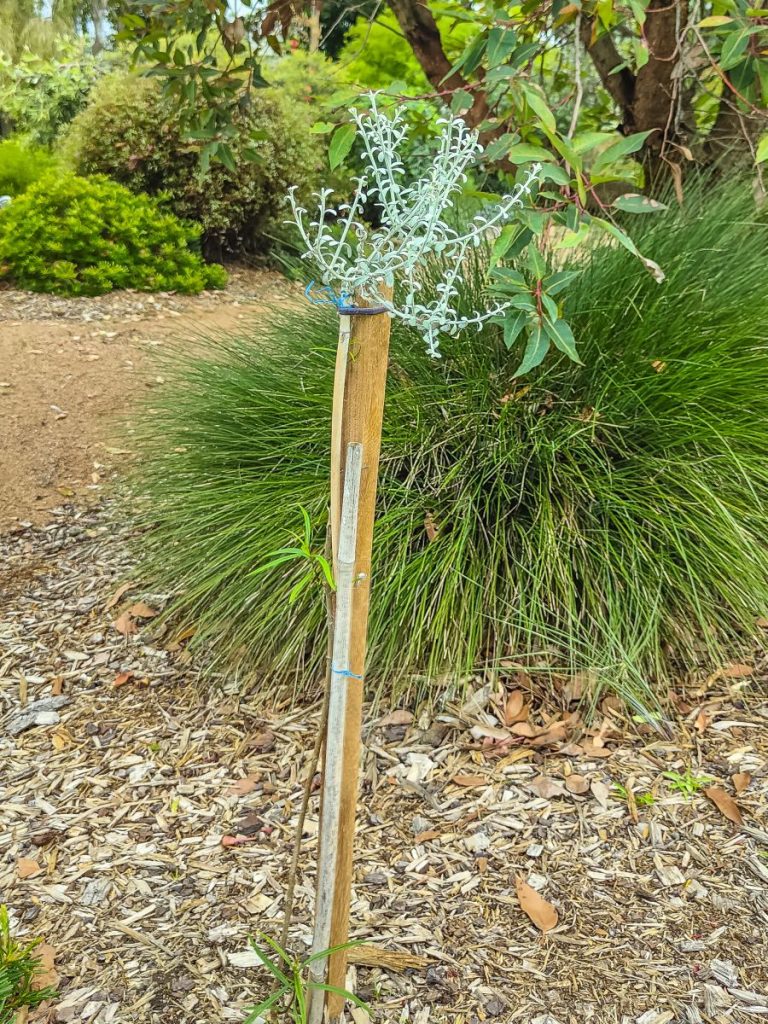
Eremophila fraseri x cuneifolia – short standard. I expect that this plant will be heavier on the stick than most others so it will be a good to see if the bateae can take the weight. I’ll just prune this as I think it needs it. Planted in September.
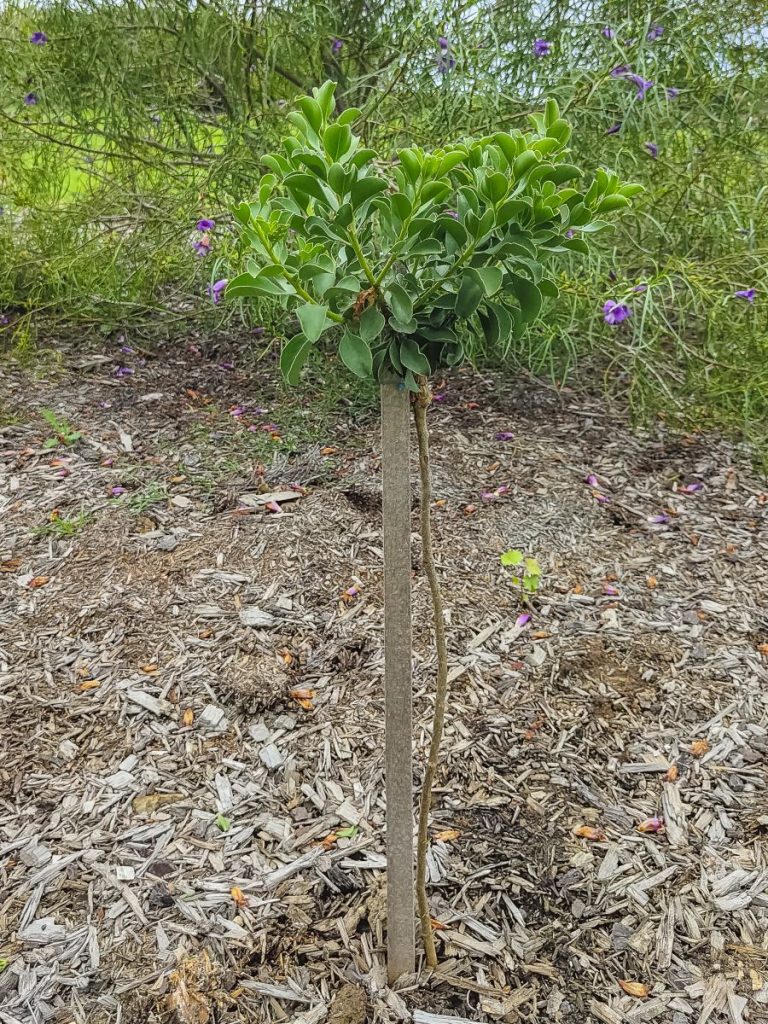
The future?
The next 12 – 18 months should tell me a great deal about which of the Eremophilas I’m growing are worth the effort.
Most of my plants are still in their infancy. I have plants of E. glanduiflera, E. ‘Yanna Road‘, E. punicea, E. goodwinii x prostrata, E. glabra ‘Murchinson River‘ , E. glabra ‘Streaky Bay‘, E. glabra ‘Amber Carpet’, and a glabra species I got from Rob Grundy ( foliage like E. subflucossa) that have taken in the last month.
There are many others I would like to trial, particularly E. cuneifolia and perhaps E. hygrophana. Any eremophila that has a compact growth habit is worth a go. Some of the prostrate glabras like ‘Bellala Gold’ also have potential.
Work needs to be done growing the standards in the ground as compared to pots. How different will the growth rate and habit be? Will the maintenance regime, particularly pruning be different? How long will the plants be suitable in pots and what fertilising regime will they require?
A yet to be answered question is whether the standards will be long lived. We all lose plants. There have been so few standards planted that one cannot draw too many conclusions from the odd plant that may have turned up its heels.
Hopefully I will have a few E. nivea and E. waitii standards ready to sell at the September open days at the Grevillea Park. It will be interesting to see if people see them as desirable.
Time will tell if this is just my interest or whether there is a broader appeal.
Update
This article was written prior to the worst of the consistent deluge in 2022. Here on the South Coast we had 2400mm. Several of the standards succumbed, so I might rethink M. bateae as an understock. I have been growing M. acuminatum as a possible replacement because it has thicker stems than insulare and montanum. Having said that, I don’t expect to have a repeat of the weather of the least few years, and so I might take the risk and continue to use M. bateae.
This article is taken from the Armidale group Summer Newsletter 2023. John Nevin – Editor of Armidale APS Newsletter.
